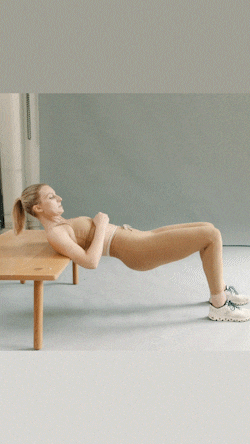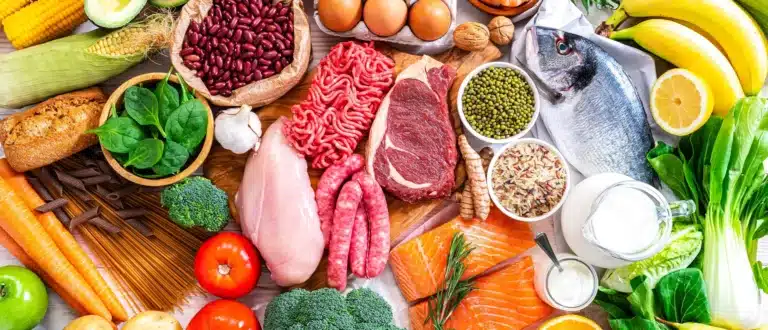Hip Thrust, Glute Bridge, Kas Glute Bridge: What’s the Difference?
If you’re a fan of leg day, you’re likely no stranger to hip thrusts. Hip thrusts are one of the most popular ways to develop strength and hypertrophy (muscle growth) in your glutes, the largest muscle in your body.
Many people believe that hip thrusts and glute bridges are one and the same, but there are key differences between these two glute-building exercises, as certified personal trainer, Alexandra Redmond demonstrates in her latest Instagram post.
While these glute exercises look very similar, they actually target different muscles. Here’s everything you need to know about the differences between the hip thrust, glute bridge, and Kas glute bridge (the glute bridge variation Redmond shows in her post)—including when to use each to maximize gains.
What Is a Hip Thrust?
A hip thrust is a must-have in any lower body strength training program. It’s similar to a glute bridge, but the greater range of motion means you’ll also recruit your quads and hamstrings.
With a hip thrust, you begin sitting on the ground with your mid to upper back against the edge of a workout bench, box, or chair, knees bent, and feet flat on the floor. In this exercise, when you lift your hips toward the ceiling, your shins should create a 90-degree angle, and when you hinge back toward the ground, they should travel back with you.
To make this version more challenging, load a barbell onto your hips. As you raise your hips, the weight of the bar adds an extra challenge for your muscles. As you get stronger, it’s easy to progress by increasing the weight of the plates on your barbell.
How to Perform a Hip Thrust
- Position your mid to upper back on the edge of a box or bench with your loaded barbell next to you, and your feet hip-width apart.
- Roll the barbell onto the crease of your hips. (You can also place a towel or pad in between the bar and your pelvis to add some cushion.)
- Squeeze through your glutes and push through your heels to press your hips up toward the ceiling.
- Keep your core activated, spine neutral, and eyesight directly in front of you.
- At the top of the movement, squeeze your glutes to fully extend your hips. Your shins should be vertical, forming a 90-degree angle.
- Pause, and slowly lower to the ground, hinging at the hips and allowing your knees to travel back toward you naturally.

What Are the Pros and Cons of Hip Thrusts?
Pros
Easy overload: the ability to somewhat easily add more weight to an exercise over time is hugely important for progress—whether your goal is building muscle or getting stronger. You can start hip thrusting with no weights at all and, because it’s typically a barbell exercise, you can add as much weight as you can handle.
Glute isolation: oddly, there aren’t many glute-focused weight training movements that most gym goers can execute. The hip thrust is one of the few.
Easy to execute: because the movement is hardly complex—and you can do them just about anywhere—the hip thrust has been and will remain hugely popular.
Cons
Not the best glute exercise: the best muscle-building exercises are those in which the weight you’re lifting is applied while the muscles are stretched. Put simpler, we want the hardest part of a lift to occur while the muscle is stretched, not contracted, which is the opposite of what happens during a hip thrust, which is hardest while your glutes are at full contraction. Looking for a better butt workout? Try lunges.
Annoying to set up at gym: you need a lot of equipment and a good chunk of time to get a barbell hip thrust station set up at your gym, which can be frustrating when you’re trying to make your time count. If your gym has a machine, count yourself lucky.
What Is a Glute Bridge?
A glute bridge is a popular exercise for beginners because it can easily be done without equipment, but it’s also great for activating the glutes during a warmup.
It can be performed in a variety of ways. Lying on your back with knees bent and feet flat on the floor, simply push into your heels and lift your hips towards the ceiling, squeezing your glutes and activating your core to keep your lower back from arching.
To make the move more challenging you can load your hips with dumbbells, or loop a resistance band around your thighs. Because of your positioning on the ground, it’s hard to load this exercise with heavy weight, which makes it better for lighter weight, high rep workouts.
How to Perform a Glute Bridge
- Lie on your back with your arms at your sides, feet flat on the ground, and knees bent.
- Press your lower back into the ground, activating your core.
- Exhale and squeeze your glutes, pressing into your heels to drive your hips toward the ceiling.
- Raise your hips until your body forms a straight line from knees to chest.
- Pause, and slowly lower to the ground.

What Are the Pros and Cons of Glute Bridges?
Pros
No equipment needed: you can do a glute bridge quite literally anywhere you’re willing to lie on the floor. This is a huge plus for folks who prefer to workout from home, or are looking to get a little stimulus while away from their gym or low on time.
Great warmup exercise: because it’s so simple to set up and doesn’t require any equipment or much space, it’s an excellent addition to any warmup or even wakeup routine.
Cons
Difficult to overload: you can put a weight or dumbbell on your lap during a glute bridge, but you’re limited in how much weight you can add when compared to a hip thrust, which allows you to add a lot of weight because of the barbell. Overload is critical for progressing strength and muscle growth, so this is a rather big negative.
Limited range of motion: because your back is on the ground during a glute bridge you are limited in how far you can raise your pelvis, which limits the range of motion of the entire movement.
What Is a Kas Glute Bridge?
The Kas glute bridge is easier to load with a barbell than a traditional glute bridge, making this alternative the better option for lifting heavy.
Your positioning is almost identical to a hip thrust, with your mid to upper back against the edge of a workout bench and a barbell loaded on your hips. However, instead of completing an explosive full range of motion, the focus is slow and controlled movement at hip extension (or the top portion of your hip thrust) where your glutes see the highest activation.
Because a Kas glute bridge is focused primarily on the glutes, you still won’t be able to load this exercise as heavy as a hip thrust since you don’t get the added help from your hamstrings and quads; however, it presents a great upgrade from a traditional glute bridge.
How to Perform a Kas Glute Bridge
- Position your midback on the edge of a chair or bench with your loaded barbell next to you, and your feet hip-width apart.
- Roll the barbell onto the crease of your hips. (You can place a towel or pad in between the bar and your pelvis to add some cushion.)
- Press hips up until your shins are vertical and your knee forms a 90-degree angle; this is your starting position.
- Squeeze through your glutes and push through your heels to press your hips up toward the ceiling.
- Keep your core activated, spine neutral, and eyesight directly in front of you.
- Hinge at the hips to slowly lower 1-2 inches back to your starting position.

What Are the Pros and Cons of the Kas Glute Bridge?
Pros
Controlled movement: we always want to control the weights when lifting, and that’s what the kas glute bridge is all about. You’re basically freezing the middle and top portions of a hip thrust, which will require you to maintain total control of the weight in the hardest parts of the movement.
Easy to overload: like a hip thrust, you’ll usually have a barbell sitting in your lap for a kas glute bridge, which makes it very easy to add or subtract weight from.
Cons
Shorter range of motion: while not always the case, larger ranges of motion while lifting are generally considered better than shorter. The kas glute bridge is shorter than the hip thrust, which isn’t ideal.

Want exclusive content? Our digests do that.
The best science-backed, expert-driven health and lifestyle content delivered to your inbox, weekly.
The Major Difference Between a Glute Bridge, Kas Glute Bridge, and a Hip Thrust
The main difference between a glute bridge and a hip thrust is the setup. Typically, glute bridges are performed on the ground with body weight or light weight, while hip thrusts are performed with a bench and barbell.
A hip thrust is basically a glute bridge with a bigger range of motion. Because your back is elevated, there’s a larger range of space between your hips and the ground. This larger range gives the hip thrust a greater advantage for glute gains because it makes it easier to add and lift weight, and it increases activation of your glutes and hamstrings.
The glutes exhibit the highest level of activation in hip extension, which is the exact pattern that hip thrusts train. Hip extension is at the very top of your movement, where your hips are locked out and your glutes are squeezed. Hip extension is also the major goal of a glute bridge; however, hip thrusts are simply easier to load with weight, making it the better option for strengthening the glutes.
The Kas glute bridge also presents a compelling option for loading more weight while isolating the glutes. However, because it’s less explosive than a hip thrust and focused only on the end range of movement, you still can’t lift as heavy as you can with a hip thrust.
How to Choose: Glute Bridge vs. Hip Thrust
These exercises are largely focused on achieving the same hip extension movement pattern. But there are certain situations where you might prefer to use one over the other.
Glute Bridge
- Muscular endurance
- Great for warmups and activation
- Body or light weight
- High reps (15-20)
- Less range
- Slow and controlled
- Glutes only
Kas Glute Bridge
- Muscular strength
- Great for strength training
- Medium weight
- Medium reps (8-12)
- Less range
- Slow and controlled
- Glutes only
Hip Thrust
- Muscular strength
- Great for building muscle
- Heavy weight
- Low reps (6-12)
- Greater range
- Explosive power
- Glutes, hamstrings, quads
Want to try these exercises in your next training day? Use glute bridges as your warmup, hip thrusts as your heavy lower body lift, and the Kas glute bridge as an accessory lift to give your glutes some extra attention.












